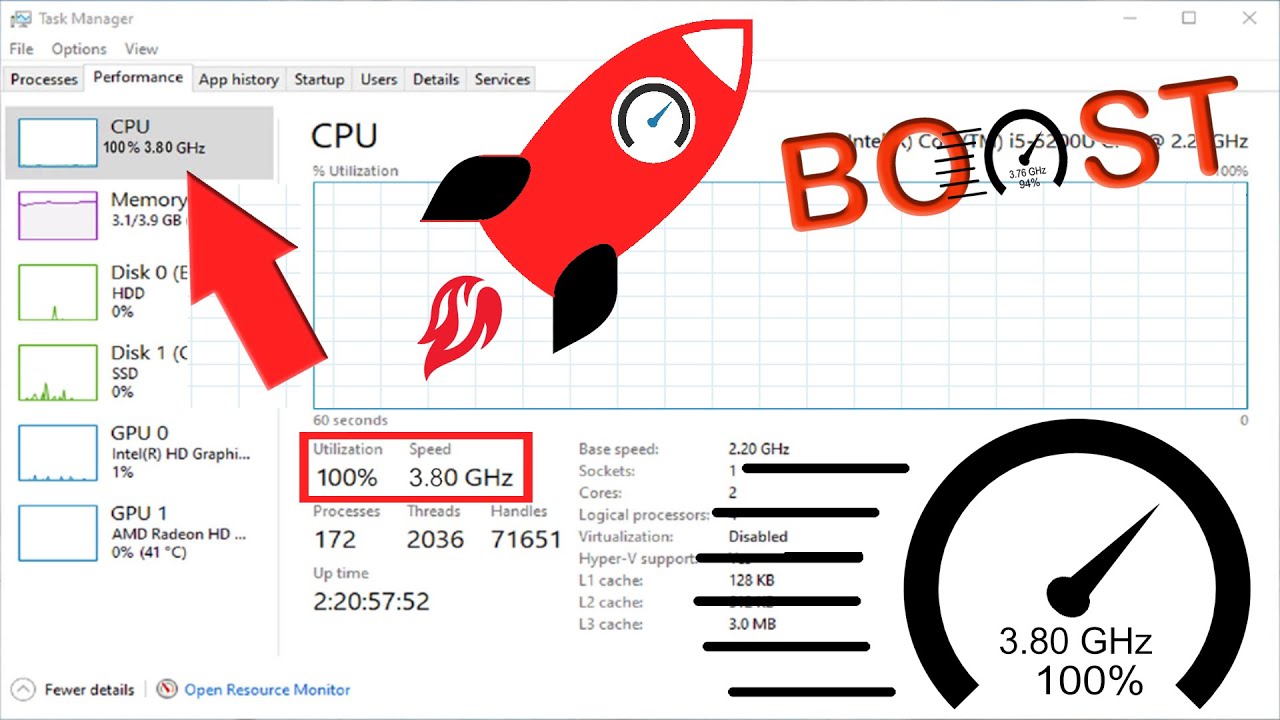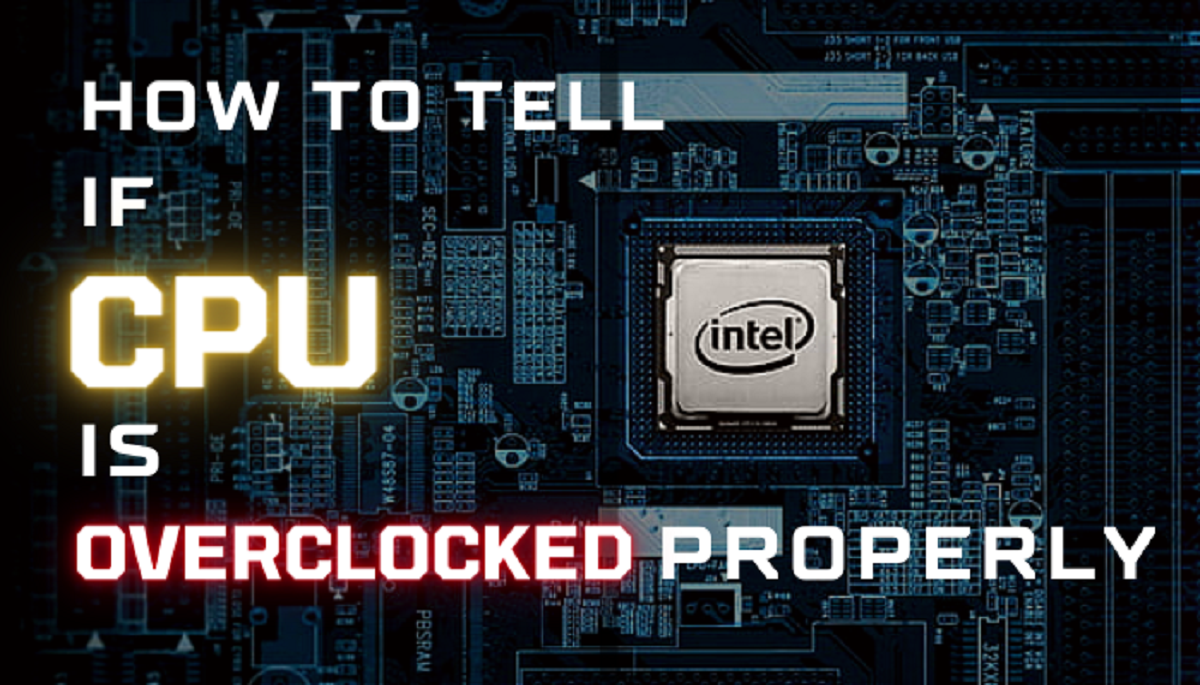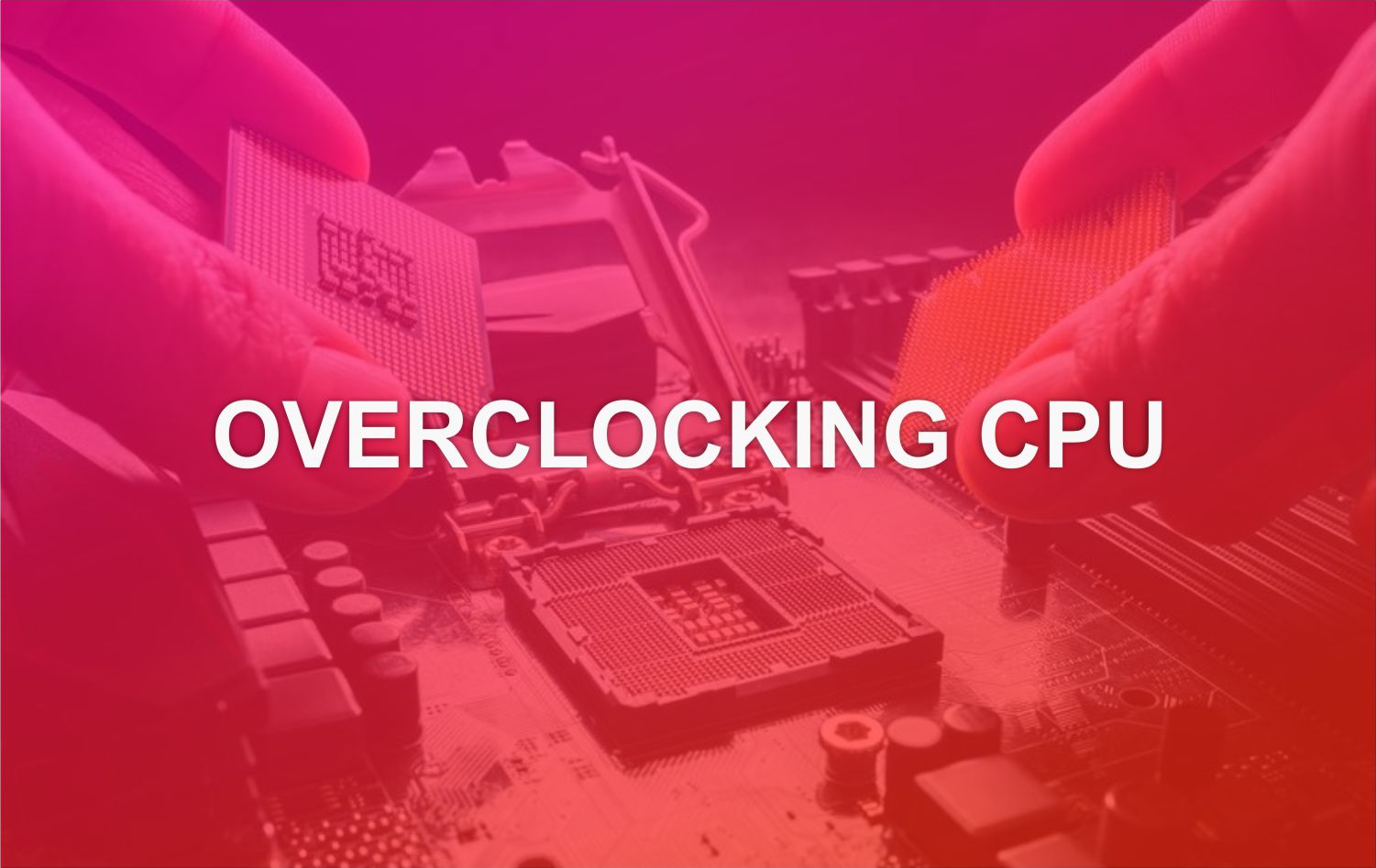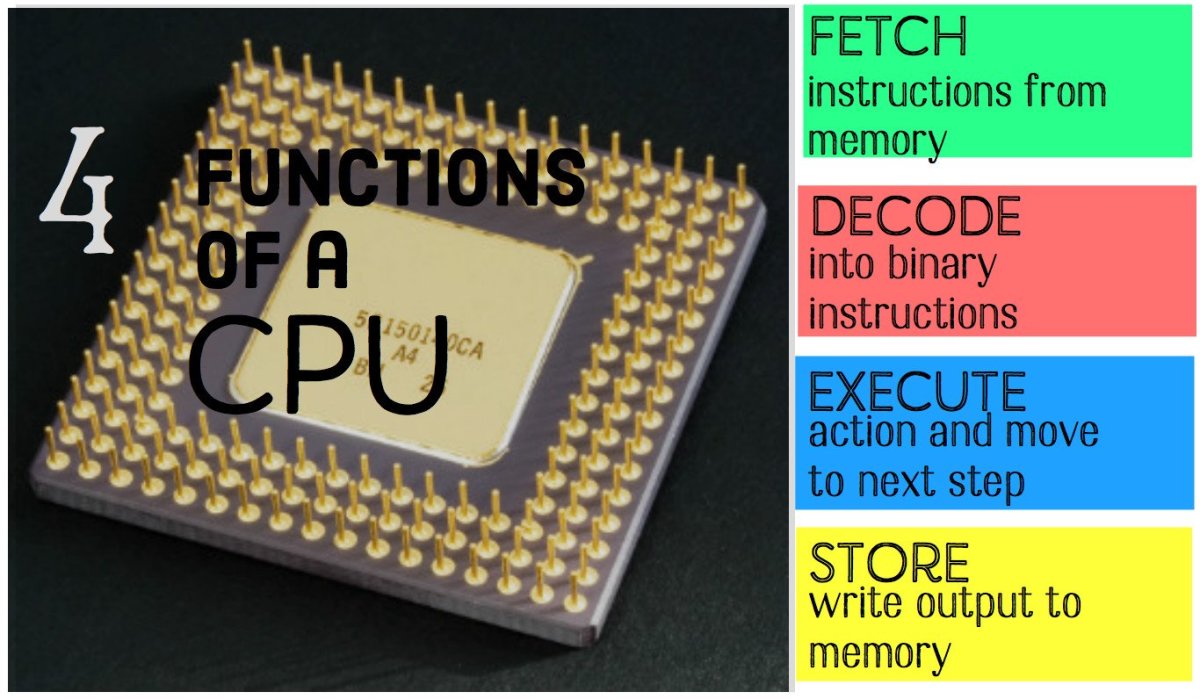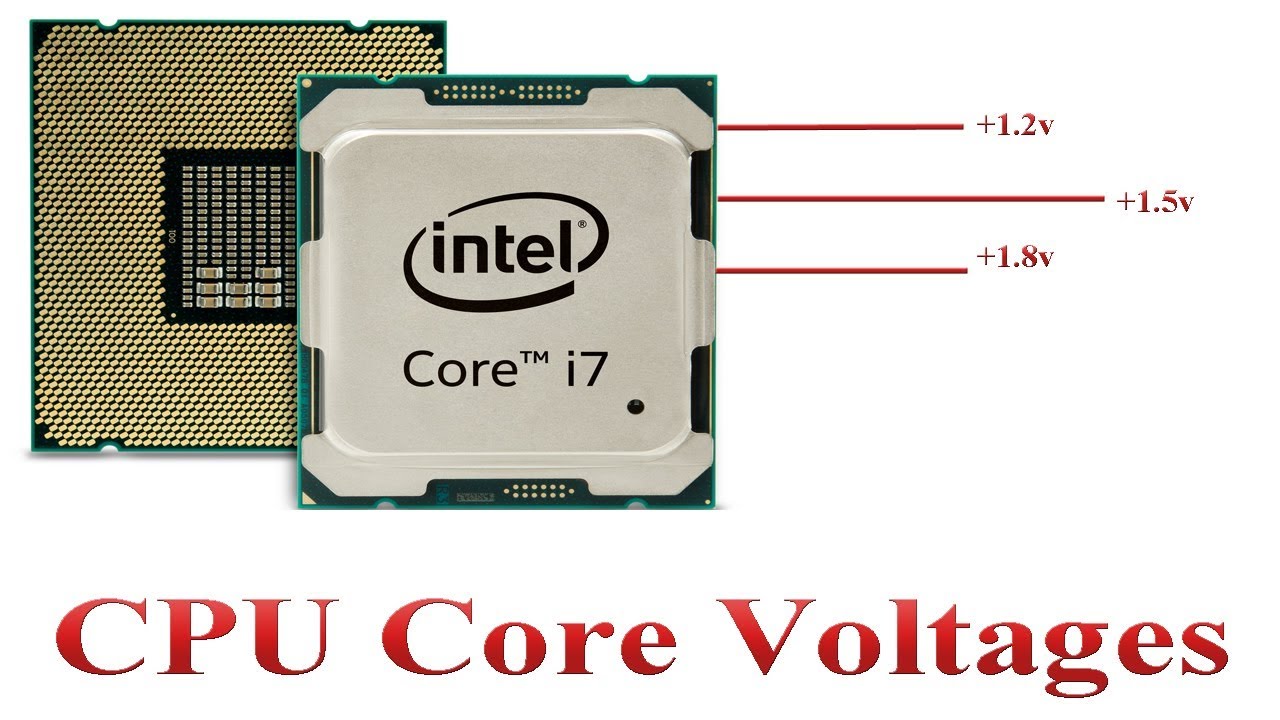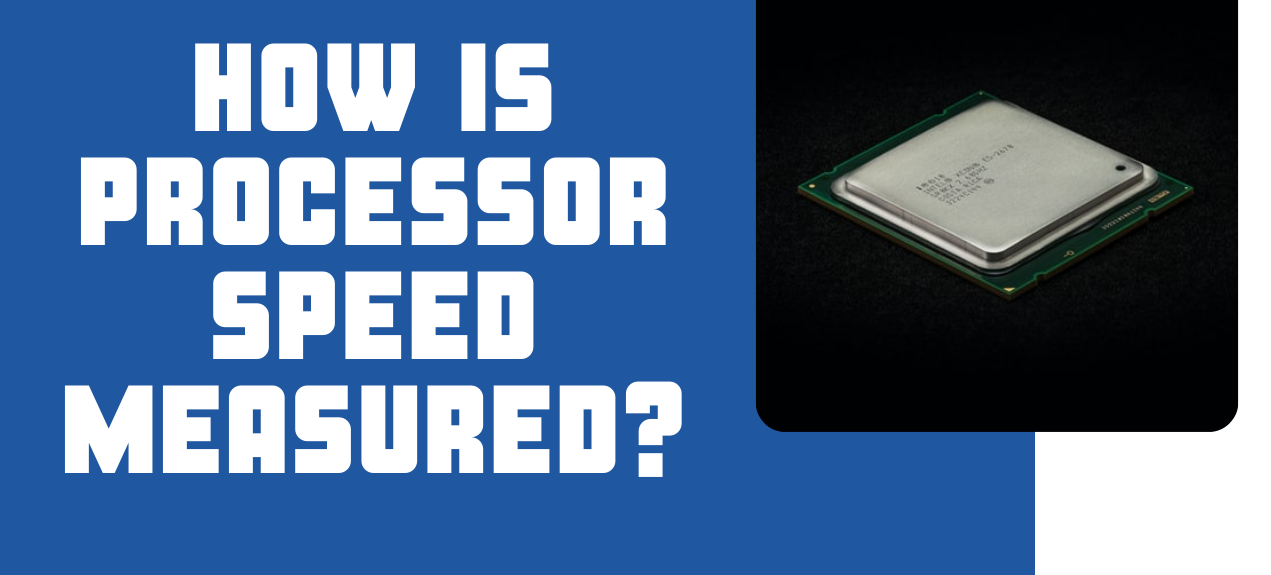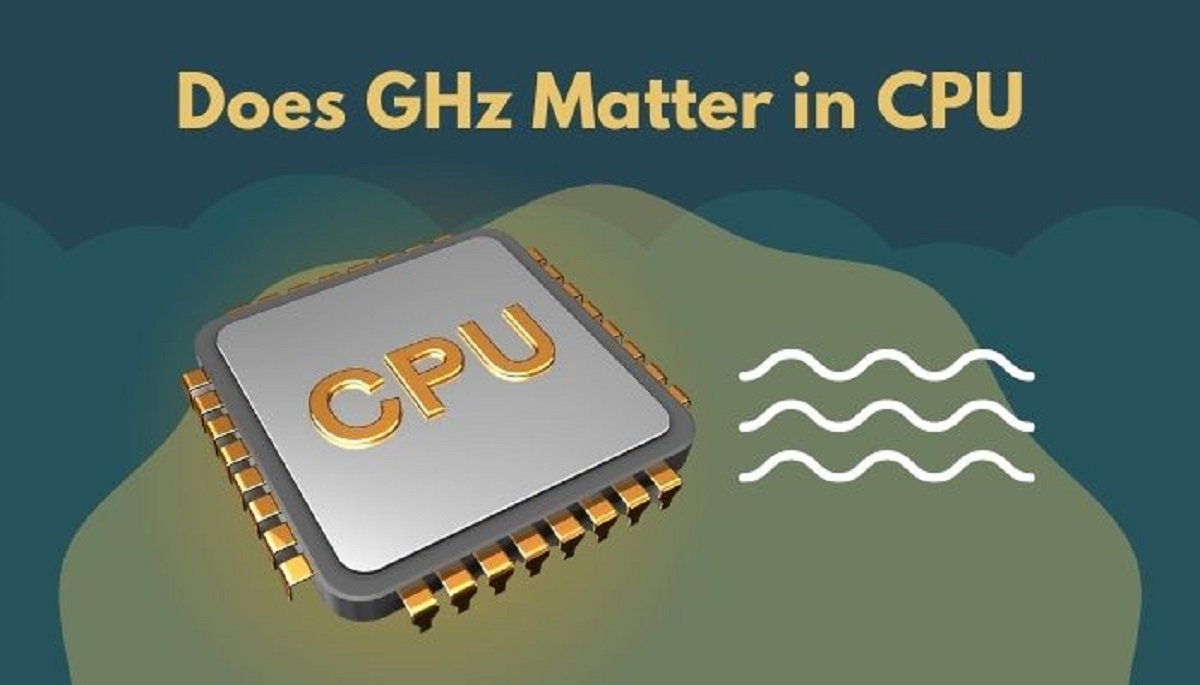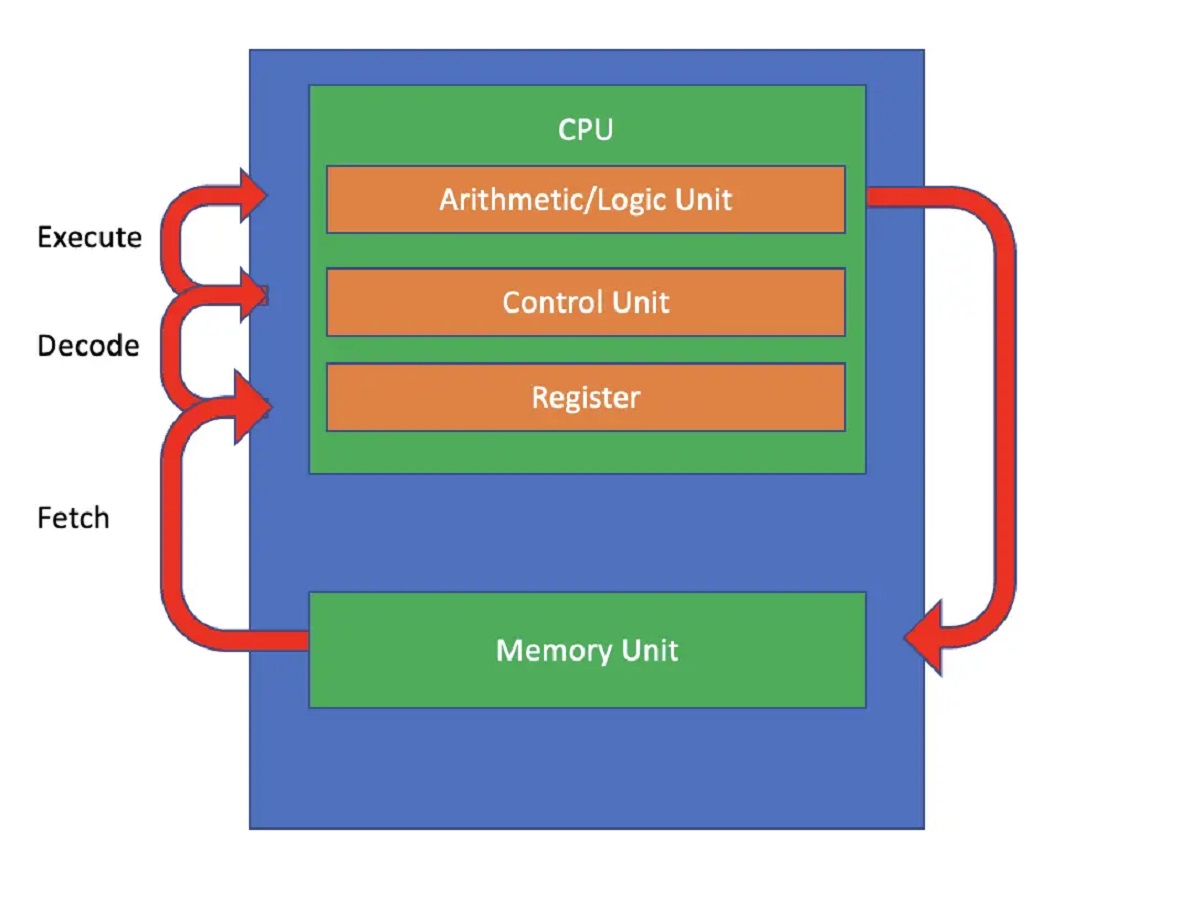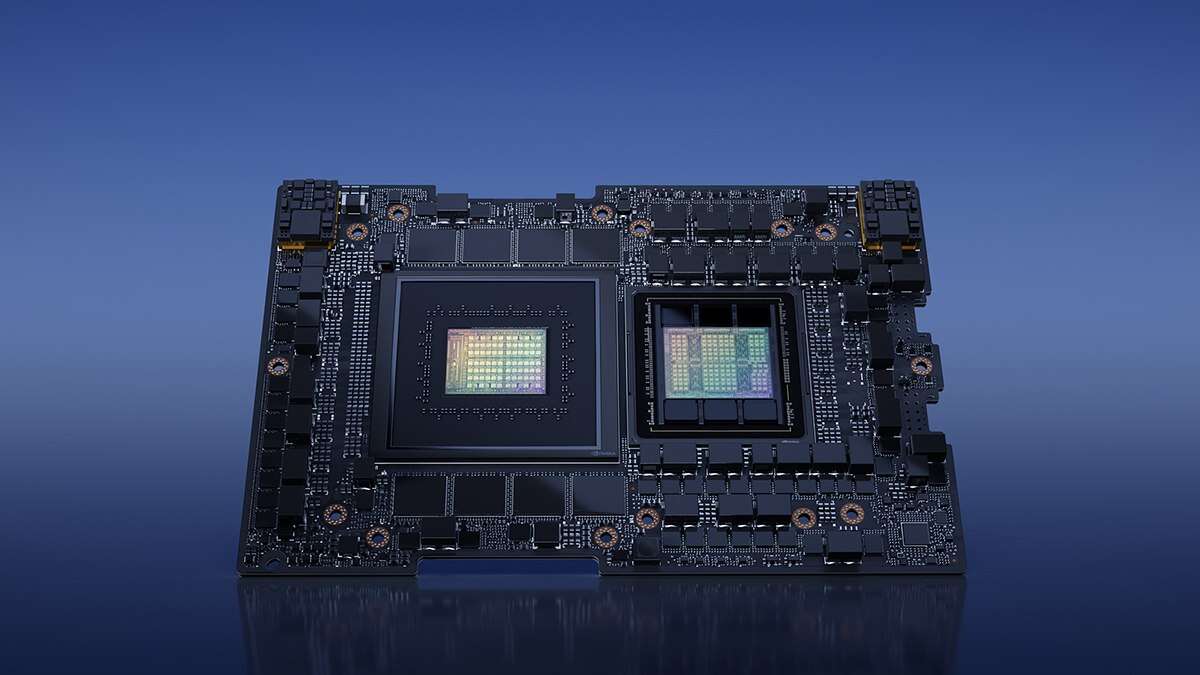Introduction
As our reliance on technology continues to grow, having a fast and efficient computer is crucial for productivity and a smooth user experience. One key factor in determining the speed of your computer is the CPU (Central Processing Unit). The CPU acts as the brain of the computer, executing instructions and performing calculations.
If you notice that your computer is running slower than usual, it may be time to optimize your CPU speed. In this article, we will explore various methods to increase the CPU speed of your computer, allowing you to enjoy faster performance and improved multitasking capabilities.
From updating your operating system and cleaning your computer to upgrading hardware and adjusting power settings, there are numerous strategies to boost your CPU speed. By following these recommendations, you can optimize your computer’s performance and ensure that it runs at its full potential.
Before we dive into the details, it’s important to note that the effectiveness of these methods may vary based on your computer’s specifications and the complexity of the tasks you perform. It is also crucial to backup your important files and data before making any changes to your computer’s settings or hardware.
Now, let’s explore the different techniques you can implement to increase the CPU speed of your computer and enjoy a faster and more efficient computing experience.
Update Your Operating System
Keeping your operating system up to date is a crucial step in optimizing your CPU speed. Operating system updates often come with bug fixes, security patches, and performance improvements that can enhance the overall efficiency of your computer.
Most operating systems, such as Windows, macOS, and Linux, provide automatic update settings. Ensure that these settings are enabled to receive the latest updates without any manual intervention.
To check for updates manually on Windows, you can go to the “Settings” menu, select “Updates & Security,” and click on “Check for Updates.” On macOS, navigate to the Apple menu, select “System Preferences,” and click on “Software Update.”
Updating your operating system not only improves CPU performance but also ensures compatibility with the latest software and hardware. This can have a significant impact on your computer’s overall speed and stability.
Remember to restart your computer after installing updates to allow the changes to take effect fully. Additionally, keeping your system drivers, such as graphics card and chipset drivers, up to date can also contribute to a smoother and faster computing experience.
By regularly updating your operating system and drivers, you can leverage the latest advancements in technology and unlock the full potential of your CPU, significantly boosting your computer’s speed and responsiveness.
Clean Your Computer
A cluttered and bloated computer can contribute to reduced CPU speed and overall performance. Over time, temporary files, unnecessary software, and other digital debris accumulate on your computer, consuming valuable system resources.
To optimize your CPU speed, it is essential to regularly clean your computer and remove unnecessary files. Here are some steps you can take to clean your computer:
- Delete Temporary Files: Use the built-in disk cleanup tool on your operating system to remove temporary files, cache, and other unnecessary data that accumulate over time. On Windows, you can access this tool by typing “disk cleanup” in the search bar, while macOS users can use the “Disk Utility” application.
- Uninstall Unused Programs: Review the programs installed on your computer and uninstall any software that you no longer use. This helps free up disk space and reduces the load on your CPU.
- Clean Up Your Browser: Clear your browser’s cache and history regularly to improve browsing speed and reduce memory usage. You can typically find the option to clear cache and browsing data in the settings or preferences menu of your web browser.
- Organize Your Files: Arrange your files into specific folders to avoid clutter on your desktop and hard drive. This will make it easier for your computer to locate and access files, improving overall performance.
By regularly cleaning your computer, you can optimize your CPU speed by freeing up valuable system resources and reducing the strain on your computer’s hardware. Not only will this enhance overall performance, but it will also contribute to a smoother and more responsive computing experience.
Close Unnecessary Programs
Having multiple programs running simultaneously can put a strain on your CPU and result in slower overall performance. To increase your CPU speed, it is important to close any unnecessary programs running in the background.
Start by identifying which programs are consuming the most resources on your computer. On Windows, you can use the Task Manager by pressing Ctrl+Shift+Esc to view a list of running processes and their CPU usage. On macOS, you can use the Activity Monitor, which can be accessed through the Utilities folder in the Applications directory.
Once you’ve identified resource-intensive programs, close them to free up CPU capacity. Be mindful of any important programs or processes that may be running in the background and only close those that are unnecessary.
In addition to manually closing programs, you can also use third-party software to manage and optimize your computer’s processes. These tools can help you identify and close resource-hungry programs automatically, ensuring that your CPU is not overloaded.
By closing unnecessary programs and managing resource usage, you can allocate more processing power to the tasks that matter, increasing your computer’s CPU speed and overall performance.
Disable Startup Programs
When you start up your computer, various programs may automatically launch in the background, consuming valuable CPU resources. Disabling unnecessary startup programs can significantly improve your CPU speed and reduce the time it takes for your computer to boot up.
To manage startup programs on Windows, you can use the Task Manager. Launch the Task Manager by pressing Ctrl+Shift+Esc, then navigate to the “Startup” tab. Here, you will find a list of programs that launch when your computer starts up. Right-click on any program you deem unnecessary and select “Disable” to prevent it from running at startup.
On macOS, open “System Preferences” and click on “Users & Groups.” Select your username, then navigate to the “Login Items” tab. Here, you can manage the programs that launch at startup by unchecking the ones that you don’t need.
Keep in mind that some programs may be necessary for the smooth operation of your computer or desired functionality. Only disable programs that you are confident are unnecessary and won’t impact your workflow.
By disabling unnecessary startup programs, you can reduce the CPU load during boot time and ensure that your computer is ready to use faster. This optimization can significantly improve your overall computing experience and allow your CPU to allocate its resources more efficiently.
Upgrade Your Hardware
If you’ve exhausted all software-based optimization methods and still find your CPU speed lacking, it may be time to consider upgrading your hardware components. Upgrading certain parts of your computer can significantly enhance its performance and boost CPU speed.
Here are some hardware upgrades that can have a noticeable impact on your CPU speed:
- Upgrade Your CPU: The CPU itself plays a critical role in determining the speed and performance of your computer. If your computer’s CPU is outdated or insufficient for your needs, consider upgrading to a newer model with faster clock speeds and improved performance.
- Increase RAM Capacity: Insufficient RAM (Random Access Memory) can lead to slower overall performance. Upgrading your RAM can provide your CPU with more memory to work with, allowing it to process data faster and more efficiently.
- Upgrade Your Storage Drive: If you’re still using a traditional hard drive (HDD), consider upgrading to a solid-state drive (SSD). SSDs are significantly faster than HDDs, resulting in faster data access times and improved CPU performance.
- Upgrade Your Graphics Card: While the graphics card primarily impacts graphics-intensive tasks, it can also have an indirect effect on overall CPU performance. A more powerful graphics card can offload some of the rendering tasks from the CPU, freeing up its resources for other processes.
Before making any hardware upgrades, it is crucial to ensure compatibility with your computer’s existing components and consider the power requirements of the new hardware. If you’re unsure, consult with a professional or refer to the manufacturer’s specifications.
Hardware upgrades can be more complex and require a higher level of technical expertise. If you’re uncomfortable performing the upgrades yourself, seek the assistance of a professional technician.
By upgrading your hardware, you can unlock the full potential of your CPU, significantly increasing its speed and improving overall performance. However, keep in mind that hardware upgrades may have associated costs, so weigh the benefits against your specific needs and budget.
Adjust Power Settings
Optimizing your computer’s power settings can have a significant impact on its CPU speed and overall performance. By adjusting power settings, you can ensure that your CPU operates in the most efficient mode for your needs.
Follow these steps to adjust power settings:
- Windows: On Windows, you can access power settings by going to the “Control Panel” and selecting “Power Options.” Here, you can choose between different power plans, such as “Power Saver,” “Balanced,” or “High Performance.” Selecting the “High Performance” mode ensures that your CPU operates at its maximum clock speed, providing optimal performance. However, keep in mind that this mode may increase power consumption and reduce battery life on laptops.
- macOS: On macOS, you can adjust power settings by navigating to the “System Preferences” and selecting “Energy Saver.” Here, you can adjust the slider between “Better Energy Savings” and “Better Performance” to strike a balance between power efficiency and CPU performance.
Additionally, you can customize advanced power settings to fine-tune specific aspects of your computer’s power management. For example, you can adjust the CPU power management settings to reduce processor parking or enable maximum performance mode.
It’s essential to find a balance that suits your needs while considering power consumption and battery life (if applicable). If you primarily use your computer for resource-intensive tasks, such as gaming or video editing, selecting a high-performance power plan can help ensure your CPU operates at its maximum potential.
Alternatively, if you use your computer for more basic tasks, such as browsing the web or word processing, selecting a more power-efficient plan can help conserve energy and prolong battery life.
By adjusting power settings to suit your specific usage patterns, you can optimize your CPU speed and strike a balance between performance and energy efficiency.
Use a Cooling Pad
Overheating is a common cause of decreased CPU performance. When your computer’s temperature rises, the processor may automatically reduce its speed to prevent damage or overheating. Using a cooling pad can help dissipate heat, keeping your CPU cool and allowing it to maintain its optimal performance.
A cooling pad is a device that sits underneath your laptop and helps improve airflow, preventing heat buildup. Here are a few reasons why using a cooling pad can be beneficial:
- Better Air Circulation: A cooling pad typically consists of built-in fans that help circulate air around your laptop, reducing hotspots and promoting even cooling. This can help prevent your CPU from overheating and throttling its speed.
- Improved Cooling Efficiency: By using a cooling pad, you elevate your laptop off the surface, creating space for better air intake and exhaust. This enhanced airflow can help dissipate heat more effectively, keeping your CPU and other internal components cool.
- Extended Lifespan: Overheating can lead to premature hardware failure and reduce the lifespan of your computer. Using a cooling pad can help prevent excessive heat damage, ultimately extending the life of your CPU and other internal components.
When selecting a cooling pad, consider factors such as compatibility, size, and the number of fans. Look for a cooling pad that suits your laptop’s dimensions and offers adequate cooling capacity for your specific usage needs.
Additionally, regularly clean the cooling pad and the internal fans of your laptop to ensure optimal performance. Dust and debris can accumulate over time, obstructing airflow and reducing the efficiency of the cooling system.
By using a cooling pad, you can mitigate the risk of overheating, maintain optimal CPU performance, and prolong the life of your computer. This simple accessory can provide significant benefits, especially for those who engage in resource-intensive tasks or use their laptops for extended periods.
Defragment Your Hard Drive
Over time, the files on your hard drive may become fragmented, meaning that they are stored in non-contiguous sectors. This fragmentation can lead to slower access times and decreased CPU speed. By defragmenting your hard drive, you can arrange files more efficiently, improving read and write performance.
Here’s how you can defragment your hard drive on Windows and macOS:
- Windows: On Windows, you can use the built-in Disk Defragmenter tool. To access it, go to the “Start” menu, search for “Defragment and Optimize Drives,” and open the tool. Select your hard drive, then click on “Optimize” or “Defragment” to start the process. Windows will analyze and reorganize the fragmented files on your hard drive, optimizing performance.
- macOS: On macOS, the default file system (APFS) has built-in mechanisms to automatically optimize file storage, reducing the need for manual defragmentation. However, if you are using an older version of macOS with HFS+ file system, you can use third-party utilities like iDefrag or Drive Genius to defragment your hard drive.
It’s important to note that solid-state drives (SSDs) do not require defragmentation. In fact, excessive defragmentation can cause unnecessary wear on an SSD. If you have an SSD, focus on regular disk cleanup and TRIM support to maintain its performance.
Defragmenting your hard drive can improve the overall speed and responsiveness of your computer by reducing access time for files and optimizing data storage. It is a recommended maintenance task to be performed periodically, especially if you notice a decline in CPU performance.
However, keep in mind that the time required for defragmentation can vary based on the size of your hard drive and the level of fragmentation. It’s best to schedule defragmentation during a time when your computer is idle to minimize disruption to your workflow.
By defragmenting your hard drive regularly, you can ensure that your CPU can access files more efficiently, leading to improved CPU speed and overall system performance.
Scan for Malware
Malware, such as viruses, spyware, and adware, can significantly impact the performance of your computer, including its CPU speed. These malicious programs can consume system resources, steal sensitive information, and create various other issues that slow down your computer. Performing regular malware scans is essential to ensure that your CPU operates at its full potential.
Here are some steps to scan for malware and protect your computer:
- Install Antivirus Software: Use reputable antivirus software and ensure that it is kept up to date with the latest virus definitions. Antivirus software can detect and remove malware from your computer, including threats that may affect your CPU speed.
- Schedule Regular Scans: Set up your antivirus software to perform regular scans of your computer. A full scan will thoroughly check all files and folders, while a quick scan will target specific areas known to be susceptible to malware.
- Enable Real-Time Protection: Activate real-time protection in your antivirus software to continuously monitor your computer for any suspicious activity or incoming threats. This can help prevent malware from infecting your system and impacting CPU performance.
- Be Wary of Suspicious Links and Downloads: Avoid clicking on unknown or suspicious links and downloading files from untrusted sources. Many malware infections occur through phishing emails or malicious website downloads.
- Keep Your Operating System and Software Updated: Regularly installing updates for your operating system and software is essential for patching security vulnerabilities that malware can exploit. Enable automatic updates whenever possible to ensure you’re protected with the latest security patches.
Performing regular malware scans and taking preventative measures can help maintain the performance of your CPU. It’s important to remember that no antivirus software is 100% foolproof, so practicing safe browsing habits and exercising caution when interacting with unfamiliar websites or emails is crucial.
If your computer is already experiencing significant malware-related issues, it may be helpful to seek professional assistance to thoroughly clean your system and ensure that all traces of malware are removed.
By scanning for malware regularly and taking proactive measures to protect your computer, you can help maintain the speed and efficiency of your CPU, ensuring a smoother computing experience.
Restart Your Computer Regularly
Restarting your computer on a regular basis is a simple yet effective way to optimize CPU speed and overall performance. When you restart your computer, it clears temporary files, refreshes system processes, and resolves any minor software issues that may be affecting performance.
Here’s why you should make it a habit to restart your computer frequently:
- Clearing Memory and Resources: When your computer is running, various processes and software applications consume memory and resources. Over time, these processes can accumulate, leading to decreased CPU speed. Restarting your computer clears out these processes, freeing up memory and resources.
- Installing Software Updates: After a system restart, your computer can install any pending software updates, including crucial updates for your operating system or applications. These updates often bring performance improvements and bug fixes that can help optimize CPU speed.
- Resolving Software Glitches: Sometimes, certain software applications may encounter glitches or conflicts that can impact CPU performance. Restarting your computer can help resolve these issues by allowing the system and software to reset and start fresh.
- Improving System Stability: Continuous usage of your computer can result in the accumulation of temporary files, corrupted data, and other issues that can affect system stability. Restarting your computer regularly helps alleviate these problems, providing a smoother and more stable computing experience.
Make it a habit to restart your computer at least once a week or whenever you notice a significant decline in performance. This practice can ensure that your CPU operates at its maximum speed and that your system runs smoothly.
Additionally, restarting your computer can also help with energy efficiency and prolong the lifespan of your hardware by allowing any accumulated heat to dissipate.
Remember to save any unsaved work before restarting your computer to avoid data loss. It’s also a good idea to close any unnecessary programs and perform a disk cleanup before restarting to further optimize system performance.
By restarting your computer regularly, you can keep your CPU running at its best, maintain overall system performance, and enjoy a faster and more efficient computing experience.
Conclusion
Optimizing the CPU speed of your computer is essential for ensuring smooth, efficient performance. By implementing the strategies outlined in this article, you can enhance your computer’s CPU speed and improve overall system performance.
From updating your operating system and cleaning your computer to closing unnecessary programs and adjusting power settings, each method plays a vital role in optimizing CPU speed. Additionally, hardware upgrades, such as upgrading your CPU or increasing RAM capacity, can provide a significant boost in performance.
Regularly scanning for malware, defragmenting your hard drive, using a cooling pad, and restarting your computer are additional steps you can take to maintain CPU speed and prolong the lifespan of your hardware.
Remember that the effectiveness of these methods may vary depending on your computer’s specifications and usage patterns. It’s important to find the right balance between optimizing CPU speed and considering factors such as power efficiency and battery life.
By implementing these strategies and maintaining good computer hygiene practices, you can ensure that your CPU performs at its best, resulting in a faster, more responsive, and enjoyable computing experience.
Take the time to regularly assess your computer’s performance and make adjustments as needed. With a little effort and attention, you can unlock the full potential of your CPU and enjoy a high-performance computing environment.







